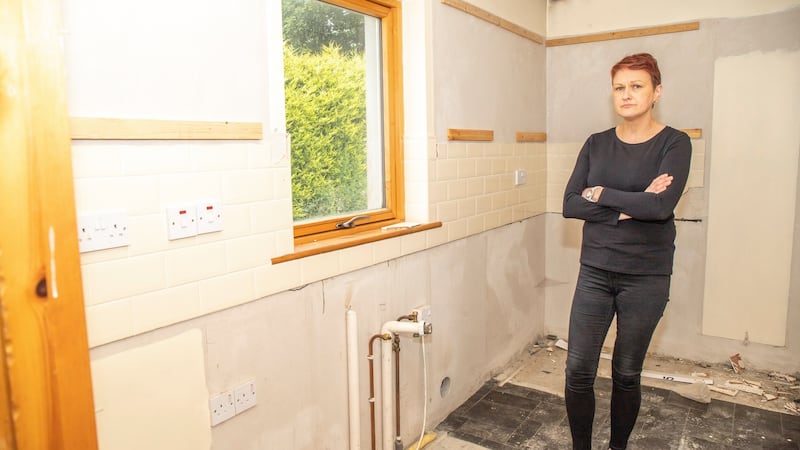An estimated 1,000 social homes in Donegal are affected by defective building blocks containing mica, raising concerns about how the county council will manage to rehouse tenants, while struggling to manage an already large social housing waiting list.
While defective building blocks containing mica have caused cracks and fissures to open up in an estimated 5,000 private homes in Donegal, with more across other counties, there has not yet been any figure provided for the number of social houses or public buildings affected by the issue.
However, information released to The Irish Times under the Freedom of Information Act states that there are about 1,000 council-owned houses in Donegal now demonstrating signs of mica.
The average cost of work on mica-affected homes generally was recently put at €174,000 per dwelling, which would put the cost of the roughly 1,000 affected social homes at about €174 million if demolition and reconstruction was generally required.
According to Donegal County Council, an application for funding will be submitted to the Department of Housing shortly in respect of the initial tranche of houses.
“Once approved, we will proceed to tender so that we can commence remedial works as soon as possible,” the council said in a statement read. “The council will continue this process and make further funding applications to the department, and carry out remedial works to further houses as required.”
The 1,000 figure equates to 20 per cent of the total local authority housing stock in Donegal.
Bad foundations
Caroline Long, who recently moved from her council home of 13 years due to mica-related defects, is one of the many affected tenants.
Ms Long and her son were living in a house built on her father’s site, which was sold to the council under the Specific Instance scheme. Several years later, “the whole corner of the house had shifted”.
Ms Long said she was “able to put a floor brush right underneath the foundations”.
“The roof had also lifted, and there were cracks and dents on the way in. The outside was really bad, to the point where it was dangerous and we were just waiting for it to fall in.”

Ms Long is unable to register for any redress of any kind because she is a tenant who pays rent to the council and does not own the house.
“But we are still losing money. I had spent thousands on my house over the years to make it into a home. It was just so sad having to walk out and close the door on it.”
Where council tenants will go if they have to be rehoused is "a big concern" for Sinn Féin councillor Jack Murray.
“There’s very little accommodation at all for private rental, and definitely next-to-no alternatives for social housing available,” he said.
“We have one social housing development in the works but it seems inevitable that rather than housing new families from an already very large waiting list, it’ll be necessary to use them for people whose council homes are affected by mica,” he says, adding that the council “needs to use whatever time we have to construct houses so people don’t end up in hotels or homeless.”
Biggest worry
A 2018 audit report for Donegal County Council had initially identified 600 affected properties, the remedial costs of which were said to be “significant”. However, the estimate has now risen from 13 per cent of the total social housing stock to 20 per cent. This does not include public buildings, such as doctors’ surgeries or schools, that might be affected.
“I don’t know where everyone is going to go,” said Ms Long. “I’m grateful I got a new house but I was rehoused into a totally different parish and basically have to start over because of the shortage.
“I never would have wanted to start over in a different community but I was forced to do so. Where I’ve moved to seems perfectly lovely but I don’t know anybody. It was a home and memories I had, not just a house.
“I can’t help but feel wary that I could have the same fate down the line in years to come with this house if the materials aren’t up to scratch again. That’s my biggest worry.”
The estimated figure of 1,000 social homes affected by mica in Donegal is based on general visual surveys. More detailed assessments have commenced, with a view to determining the nature and extent of works that might be required to affected houses.
An application for funding will be submitted to the Department of Housing in respect of the initial tranche of houses. Once approved, the council will proceed to tender to commence remedial works.








